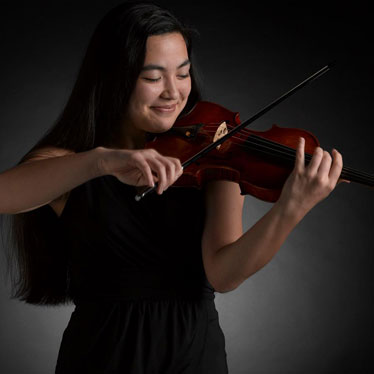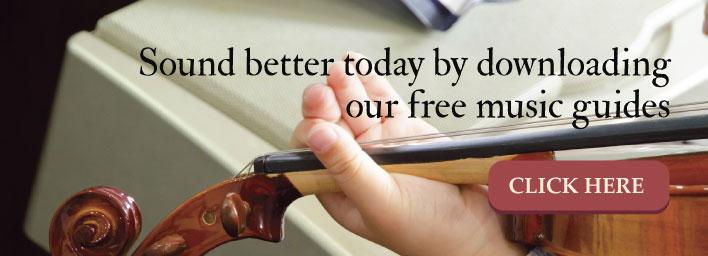How to Reduce Tension When Playing the Violin

Tension is like kryptonite to string players, especially violinists. Tension in your hand, arms, back, and neck will not only restrict your freedom of movement while playing and produce a wholly unpleasing sound, when left unchecked it has the potential to cause serious stress related injuries. Indeed, knowing how to play without tension is one of the most difficult aspects for beginners and intermediate students to learn. However, by understanding the causes of tension and developing techniques to reduce it, you’ll see marked improvement in your performance and discover new joys in playing your instrument.
What’s causing the Problem?
The head, neck, and back are essential for orchestrating balance, coordination, and movement; and improper alignment in the relationship between them is extremely detrimental to overall health. When you tense your muscles to hold the instrument correctly, the strain makes it difficult to produce great sound. Beginner violinists are particularly susceptible to these problems until their muscle strength has been developed.
Tension energy transfers. Try this: while sitting, place both feet flat on the floor. Squeeze your toes and put pressure on the floor. After a few seconds, you’ll feel your calves start to tense. The unreleased tension has to go somewhere, so it transfers to your legs. The same thing happens when you tensely play the violin. Pushing your head downward to hold the violin in place, rather than using its natural weight correctly, twists your torso, causing harmful compression on other parts of your body. Likewise, using your pinky to balance the bow or lifting your shoulder to support the violin causes hand and arm tension that severely limits the fluidity of motion required to produce beautiful sound.
Moreover, as you make progress learning to play your violin, you may have noticed that your tension levels have increased. This is often the result of trying too hard, too quickly; but physical changes also have an impact. The following ideas can be used to release immediate strain, and also train your body so that unwanted tension disappears.
Reducing Tension
Music is a wonderfully personal expression; and the way that you hold your violin is also subject to a variety of personal factors. However, there are many fundamental techniques that will help reduce the tension you’ve unconsciously developed, and which will naturally improve your performance.
Concepts to Remember:
- Let gravity do its job. The shoulder and chin rests should allow you to support the violin without either dropping the head too far or raising the shoulder. The ideal involves using only the natural weight of your head, rather than muscle tension, to support the instrument. Plus, your bow should catch the strings without a conscious downward pressure; rather, guide your bow onto the violin strings.
- The correct posture you were taught originally is very important. It’s easy to “bend the rules” of form as you learn more bowing techniques, but becoming lax in this area will lead to increased tension.
- Remember to breathe steadily while playing. Unconsciously holding your breath through a difficult passage can cause immediate tension.
Exercises:
- Shake it out. Whenever you feel yourself tensing, stop playing and shake out your muscles. Although this may seem obvious, too many students ignore the tension or try to loosen up while playing, and either activity will just make it more difficult. Once you’re limber, position the violin correctly and start over.
- Slow Down. Rushing through practice increases the stress placed on your body. By slowing down, you give the muscles in your arms and fingers more time to make to create the right movements.
- Baroque Bow-Hold. In the 1600’s, violin bows resembled the ones used with arrows, and were held much closer to the middle of the bow. To try this, locate the balance point of your bow (the spot where you can balance it horizontally by holding the stick). Try holding your bow with your normal hand position at this point and play a few notes. The bow should feel very light. After a few minutes, go back to the correct position; you should feel and hear a noticeable difference through a lighter, more relaxed bowhold.
Final Tip
Although problems with form and bowing techniques are usually the major culprits, often a more ergonomic shoulder rest or a better quality bow can make a huge impact on your tension levels. If you still struggle with tense hands, neck, and arms, consider making these adjustment to your violin.
By taking your time during practice, ensuring that you’re holding your instrument properly, and focusing on good posture you can reduce tension while playing the violin. Although these exercises and tips might seem like minor issues, giving them your full attention will result in better overall sound production and reduced risk of lasting injury.

